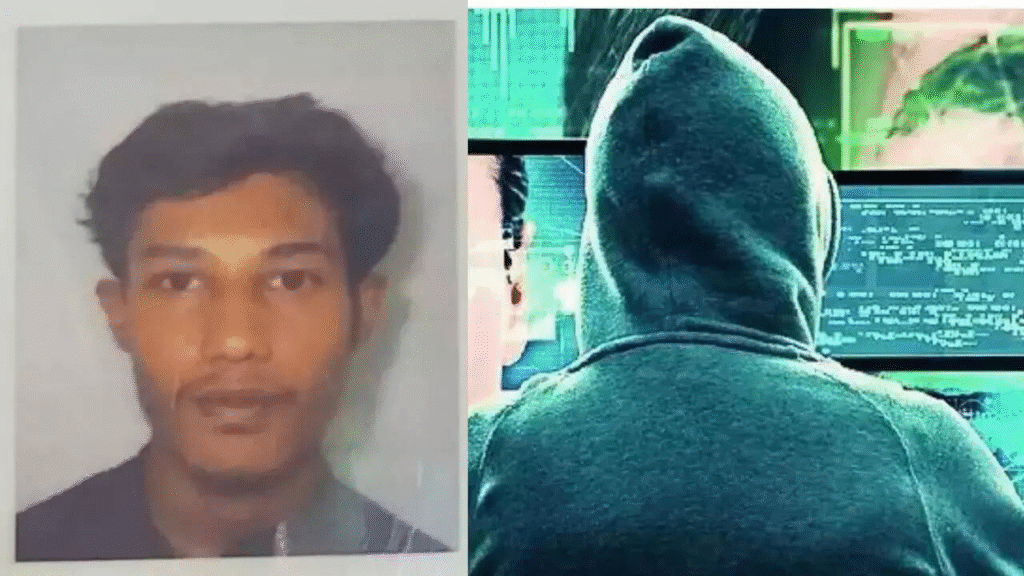
In a startling revelation that has captured the attention of cybersecurity experts and government officials alike, a teenage hacker from Gujarat, who did not complete his Class 12 education, has been identified as the mastermind behind a massive cyberattack that compromised more than fifty government websites across India. Utilizing the popular open-source platform GitHub, the young attacker orchestrated an elaborate digital assault, dubbed Operation Sindoor, that has exposed glaring weaknesses in the country’s cybersecurity defenses.
This alarming incident not only underscores the increasing sophistication of cyber threats but also signals a wake-up call to government agencies and digital infrastructure custodians to reassess and strengthen their security protocols. At the heart of this story lies a complex web of digital vulnerabilities, youthful hacking prowess, and the evolving challenges of safeguarding critical state assets in an increasingly interconnected world.
The Genesis of Operation Sindoor: From a Classroom Failure to a Digital Storm
The hacker’s journey is as unconventional as the cyberattack itself. Despite dropping out of formal education after failing Class 12, the Gujarat teenager managed to acquire substantial self-taught knowledge in coding and hacking techniques. His fascination with computers and programming led him down a path where he learned to exploit web vulnerabilities, turning him into a formidable threat actor capable of challenging sophisticated defense systems.
Unlike many cybercriminals motivated solely by financial gain, this young hacker appears to have pursued a more ideological or symbolic mission with Operation Sindoor. The choice of the campaign’s name, “Sindoor” — a traditional vermilion powder used in Hindu rituals symbolizing marriage and commitment — suggests cultural undertones that may have inspired or driven his actions. Whether this was intended as a statement, a protest, or a challenge to authority remains under investigation.
What is clear, however, is the fact that the hacker used GitHub, an online code repository platform typically associated with collaboration and innovation among software developers, to carry out his operation. This unprecedented use of a trusted development platform to launch a cyberattack marks a concerning evolution in the threat landscape.
Operation Sindoor Unfolded: The Attack’s Scale and Mechanisms
The attack targeted more than fifty government websites spanning multiple departments and regions. These websites included portals offering essential public services such as welfare scheme registrations, administrative functions, and citizen grievance redressal platforms. The disruption of these websites not only delayed critical government processes but also eroded citizen trust in the digital governance system.
Investigations revealed that the hacker employed malicious scripts embedded within GitHub repositories to infiltrate and compromise these sites. By exploiting vulnerabilities such as improper input validation, outdated software frameworks, and misconfigured web servers, he gained unauthorized access to sensitive backend systems.
The attack vector involved a combination of SQL injection, cross-site scripting (XSS), and remote code execution (RCE) techniques, which allowed the attacker to manipulate website content, deface pages, and potentially extract confidential information. In some instances, the attacker deployed ransomware-like payloads, encrypting data and demanding silence or inaction.
Security teams scrambled to identify and contain the breaches, working around the clock to restore functionality and secure data. The swift yet reactive response exposed the lack of robust, real-time monitoring tools and advanced threat detection mechanisms in many government IT infrastructures.
The Role of GitHub: From Developer Sanctuary to Exploitation Hub
GitHub is celebrated worldwide as a platform fostering collaborative software development. It hosts millions of repositories where developers share code, contribute to open-source projects, and innovate collectively. Its openness and accessibility have democratized software creation, enabling programmers from all backgrounds to participate in technological progress.
However, this openness also creates opportunities for exploitation. Malicious actors, including the Gujarat teen in question, can upload harmful scripts disguised as legitimate code. These repositories can then serve as delivery platforms for malware or command-and-control hubs in complex cyberattacks.
The Operation Sindoor attack demonstrated how cybercriminals are evolving to leverage popular developer platforms, blending their malicious operations into the vast sea of benign code projects. This approach complicates detection efforts, as conventional security tools often trust traffic or files originating from well-known domains like GitHub.
Microsoft, the owner of GitHub, has acknowledged these risks and recently enhanced its platform security features. These include automated scanning for malware, stricter repository validation, and improved reporting mechanisms. Nonetheless, the incident highlights the ongoing cat-and-mouse game between platform providers and malicious users.
Profiling the Hacker: Youth and Cybercrime in the Digital Era
The hacker’s youth is emblematic of a disturbing trend worldwide — the rising involvement of young, often self-taught individuals in cybercrime. These “digital natives” possess an intimate familiarity with technology but sometimes lack the ethical compass or guidance to channel their skills positively.
In India and across the globe, teenagers and young adults have been implicated in various hacking activities, ranging from prank hacks to serious attacks involving data theft and infrastructure disruption. Their motivations vary widely: some seek financial rewards, others crave notoriety, while a subset is driven by ideological or political beliefs.
The Gujarat teen’s case underscores the importance of addressing the root causes that propel youth toward cybercrime. Educational institutions, policymakers, and community leaders must collaborate to provide constructive outlets for technical talents, such as coding clubs, cybersecurity competitions, and mentorship programs.
Government’s Cybersecurity Challenges: A Vulnerable Digital Landscape
India’s journey toward digital governance has been ambitious and largely successful. Initiatives such as Digital India have expanded internet access, digitized government services, and increased transparency. However, rapid digitization has outpaced the development of adequate cybersecurity measures in many cases.

Government websites often rely on legacy software and lack regular security audits, leaving them vulnerable to exploitation. Budget constraints, skill shortages, and bureaucratic inertia further complicate efforts to establish robust cyber defenses.
The Operation Sindoor attack has exposed these systemic weaknesses. The government’s reactive posture, involving post-attack containment and investigation, points to an urgent need for a proactive cybersecurity strategy.
Strengthening Defenses: Toward a Resilient Cybersecurity Framework
In response to the breach, authorities have ramped up efforts to bolster cyber defenses. Key measures include adopting multi-factor authentication, conducting regular penetration testing, and deploying advanced intrusion detection systems.
The Ministry of Electronics and Information Technology (MeitY) is spearheading initiatives to create a national cybersecurity ecosystem, involving collaboration with private firms, academia, and international partners. Capacity building through training programs and awareness campaigns is underway to cultivate a skilled cybersecurity workforce.
Moreover, there is a push to develop indigenous security solutions tailored to India’s unique threat landscape. This includes creating frameworks for secure software development, enforcing compliance standards, and promoting cyber hygiene among government employees.
The Broader Context: Cybersecurity and National Security
Cybersecurity transcends IT concerns; it is a pillar of national security. Attacks like Operation Sindoor threaten not only administrative functionality but also the integrity of democratic institutions and public trust.
With geopolitical tensions rising and cyber warfare becoming a common tactic, India must view cybersecurity as a strategic priority. Protecting critical infrastructure — including power grids, communication networks, and financial systems — requires a whole-of-nation approach.
The Gujarat teen’s exploit serves as a reminder that threats can emerge from unexpected quarters, including homegrown actors. Consequently, a layered defense strategy encompassing technology, policy, law enforcement, and public awareness is vital.
The Societal Impact of Cybercrime: Beyond Technical Damage
Cyberattacks inflict damage that extends beyond immediate technical or financial losses. They erode public confidence in government institutions, disrupt everyday life, and can cause psychological distress.
Citizens relying on government portals for essential services faced frustration and uncertainty during the attack, highlighting the human cost of such incidents. Moreover, potential data breaches put individuals at risk of identity theft, financial fraud, and privacy violations.
Addressing cybercrime thus demands empathy and a citizen-centric approach. Transparency in communication, rapid restoration of services, and support for affected users are crucial elements of effective crisis management.
The Future of Cybersecurity Education and Youth Engagement
To stem the tide of youth involvement in cybercrime, India must innovate in education. Integrating cybersecurity fundamentals into school curricula can foster early awareness and responsible behavior.
Encouraging ethical hacking and white-hat activities through competitions, certifications, and career opportunities provides constructive pathways for talented youth. Government and private sector partnerships can offer internships and apprenticeships to harness young minds for national benefit.
Creating a culture that values cybersecurity as a profession and civic duty will help transform potential threats into assets.
Global Perspectives: Youth Hackers and Cybercrime Trends
India’s experience reflects global patterns where youth hackers are increasingly prominent. International law enforcement agencies have noted a rise in cybercrimes involving teenagers, necessitating specialized strategies for intervention.
Programs such as the UK’s CyberFirst initiative, the US’s National Cybersecurity Student Association, and Australia’s Cyber Security Challenge serve as models for engaging youth positively.
India can learn from these experiences by customizing initiatives that align with local culture, languages, and educational frameworks.
The Road Ahead: Building a Secure Digital India
Operation Sindoor is a pivotal moment in India’s cybersecurity narrative. It reveals vulnerabilities but also presents an opportunity to strengthen the nation’s digital defenses.
Moving forward, the government must prioritize cybersecurity investment, foster innovation, and develop inclusive policies that involve all stakeholders—from bureaucrats to end-users.
Ultimately, India’s digital transformation success hinges on trust, security, and resilience. The Gujarat teen’s attack, though alarming, could catalyze a more vigilant and prepared digital ecosystem.
